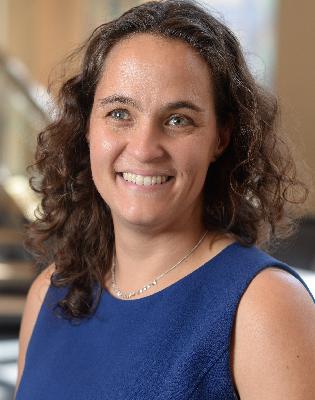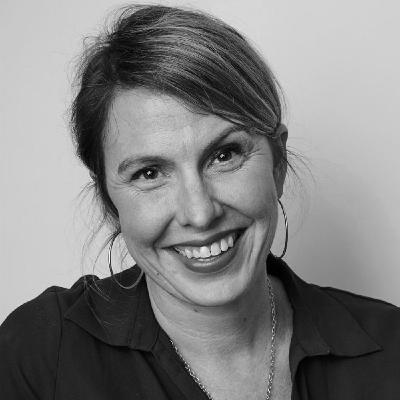51: Design-led Innovation in Emerging Markets (ft. Gaurav Mathur)
Description
Transcript
Jesse: I’m Jesse James Garrett,
Peter: and I’m Peter Merholz.
Jesse: And we’re finding our way,
Peter: Navigating the opportunities
Jesse: and challenges
Peter: of design and design leadership,
Jesse: Welcome to the Next Phase. On today’s show, we’re joined by Gaurav Mathur, VP of Design for Indian e-commerce giant Flipkart. He’ll share with us his perspective on the big issues facing design leaders in India today, including hiring and training for junior designers, as well as design leaders making the case for the business impact of design, and the opportunities for design-led startups in the Indian market.
Peter: Thank you so much for joining us today.
Gaurav: Thank you, Peter. Thank you, Jesse, for having me here. I’ve been a follower since Adaptive Path, and it’s wonderful to be speaking with both of you.
Peter: Oh, awesome.
Jesse: Thank you so much.
Peter: It would be good to get a sense of who you are and what you do. So, how do you introduce yourself and how do you talk about your career?
Gaurav: Sure. So currently, I’m the VP of Design at Flipkart. So Flipkart is a e-commerce company in India. Before Flipkart, I headed design for Myntra. Myntra is also an e-commerce company, but focuses on fashion and lifestyle. And it also happens to be a Flipkart Group company. So I have been in the e-commerce domain for probably, like, nine years or so now, and before that I worked with the SaaS division of Citrix.
The SaaS division used to make products like GoToMyPC, GoToMeeting, GoToWebinar, et cetera. I also had a brief entrepreneurial journey where I was the co-founder of a design company and we were providing design services, to get our bread and butter essentially, but also building some educational products on the site.
I studied design and architecture a long time ago. So I have been a designer at heart.
Peter: Excellent. Let’s focus on your more recent experience, both Myntra and Flipkart. One of the reasons we were interested in speaking with you is, you know, our viewpoint is very North American. So, I sometimes work with companies that have design teams in India, cause they’ve got some development teams in India, but they’re usually still like doing design for a North American or European audience.
And I know with Myntra and Flipkart, you’re really focused on working within the Indian market. So , tell us a little bit more about these businesses and what your role is, specifically let’s say with Flipkart, leading design there.
Gaurav: Sure. So Flipkart is a horizontal e-commerce platform, and it’s a marketplace that allows sellers to come on board and sell all kinds of products. We categorize these products under categories like fashion, beauty, electronics, mobiles, large air conditioners, refrigerators, et cetera. And Flipkart also manages the supply chain, warehouses, logistics, and the last mile delivery of products so that we can deliver a better customer experience overall.
So the design team at Flipkart has the product designers, or UX designers essentially, that work across all kinds of products. We also have a visual design team that works on visual merchandising for various category stores. This team also manages the design of sale events. We have a UX research team, and we’ve recently integrated the market research function, so that we are able to create a unified research and insights op for the company.
Peter: And that’s within your team?
Gaurav: Yeah, that’s all within the design team. We call it the One Design Team at Flipkart. Besides this, we also have a small content team, because Flipkart is available in 11 other languages, 11 Indian languages besides English. So there’s a bunch of content work that we do, and I feel that my primary role is essentially to act as an orchestrator for this multidisciplinary org.
And I also engage with product and business leaders in the company to achieve org goals.
Peter: How many people are in your org?
Gaurav: We are about 100… 110 people across UX, visual design, research and content.
Peter: So you have a little over a hundred folks in your org. It sounds like you’re designing for all the audiences in this marketplace, the merchant side, the seller side, internal.
You mentioned this one design team. Has that always been the case or, has it kind of evolved to this single unified design organization over time?
Gaurav: Yeah. That’s a great question. And I think it has evolved over time. So when I joined, for example, the team that works on the seller platforms was not part of this team, and we eventually integrated it. And that’s been a process, I think, it’s been a journey of integrating different parts into a single One design org.
So we think of users in three broad buckets. The first is shoppers that come on Flipkart to buy products. And the experience that we give to our shoppers is primarily on mobile devices because that’s where most Indians shop. They shop on mobile devices, not so much on the desktop website. So that’s a large, large base that we cater to.
The second set of products that we build are for sellers. And this is essentially our seller platform where sellers come and manage their listings, their catalog. They’re able to place ads, configure offers, et cetera.
The third set of users are essentially the partners that work in warehouses, in the logistic space, and the delivery partners that manage the last mile delivery. So we create a lot of products that get used in the warehouses also apps for the delivery agents. So these are products that get used across the supply chain.
And in terms of the teams we have a part of the product design team that focuses on the B2C experience. So it builds all the features and products in our mobile apps and on the mobile website as well as on the desktop website. And then we have a team that works on the B2B or the enterprise product. So these are products that the sellers use and our partners use.
So my time is split across these teams. I just love to get into the details of what we are building. And the design details, so I’m really passionate about solving navigation, interaction design, and visual design. So I have time set up in my calendar review all the key projects that are happening across all these products.
Jesse: In such a complex environment, what do you think is important for design to advocate for?
Gaurav: Yeah, I think both these areas have slightly different kinds of goals. So when we think of shoppers, I think we want to deliver a very, very delightful experience to them. We want to ease their shopping journey. We want them to find the products fairly quickly, and get to the right set of products with ease, and people come with very specific requirements. Sometimes a person may have a very specific requirements and sometimes they may just be window shopping. So we need to cater to all these kinds of users.
When we think of enterprise products, I think the primary goal is to just make them really, really efficient. So think of someone whose product’s at the warehouse, and putting the label and then just getting them ready to be shipped. Now, this is a very repetitive task, and if you’re able to shave off even those few seconds for this person, we just make the whole process very efficient.
Jesse: What do you see is your role as design leader in creating the environment where these kinds of experiences can be delivered?
Gaurav: Yeah, I think, building a really competent design team, I think is the first goal that I have. And also growing this team. It’s not just enough to build a team, but then to grow this team and grow the people in this team as well. Also, to facilitate or to kind of bring together people from different domains together.
So, for example, if you’re solving for grocery, we may have a product designer looking at grocery. We may also have a visual designer looking at grocery we’ll also have a researcher looking at grocery. So getting this pod created and facilitating this journey with the product managers and with the engineers so that we are able to build and deliver a really high quality product.
I think my job comes into play in different kinds of forms. I also want the design team to do a lot of innovation, and I call it design-led innovation. So I believe designers are at the right intersection because they are able to understand user needs fairly well and then they’re also able to visualize what the product could be.
And so therefore, they could be these facilitators, or the catalyst for driving innovation in the org. And therefore, as one of the north stars that I’ve set for the design team, design-led innovation is also one of them. We also want to build our reputation within the org through the work that we do and through the impact that we create.
So I think, just like I said, like just orchestrating and facilitating some of these becomes a very critical area for me to focus on. Besides this, obviously, like engaging with























